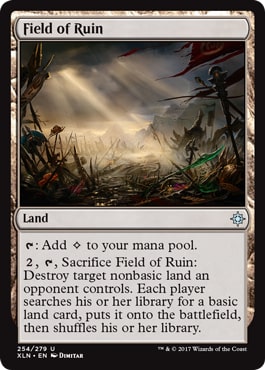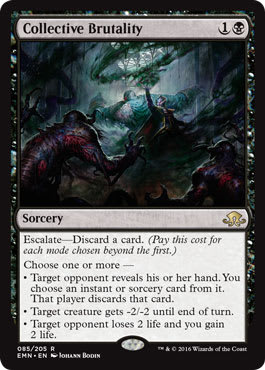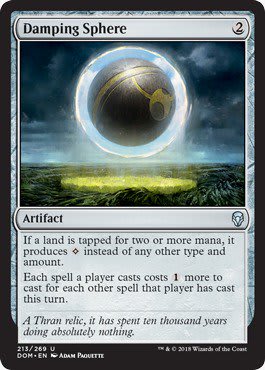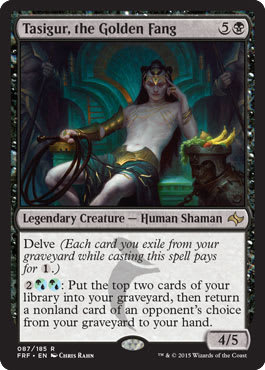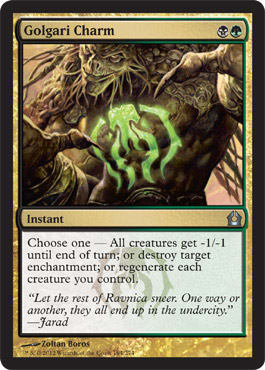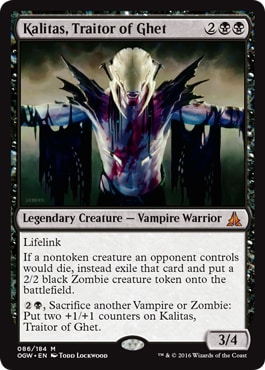SCG Louisville is coming up next weekend and for the first time in a long time, I am looking to take an event somewhat seriously. Well, at least a bit more seriously than the last major Modern event I played.
Having played a lot of different Modern decks this year, there is one that really stuck with me in terms of power level and consistency that I have taken to tuning for the Open next month:
B/G Rock -- Modern | Jeff Hoogland
- Creatures (13)
- 2 Tasigur, the Golden Fang
- 3 Scavenging Ooze
- 4 Tarmogoyf
- 4 Tireless Tracker
- Planeswalkers (4)
- 4 Liliana of the Veil
- Instants (6)
- 1 Abrupt Decay
- 1 Dismember
- 4 Fatal Push
- Sorceries (12)
- 2 Maelstrom Pulse
- 3 Collective Brutality
- 3 Thoughtseize
- 4 Inquisition of Kozilek
This is simply a collection of reasonably powerful Modern-legal cards. Just some of the best spot removal, discard, and threats the format has to offer. It packs it all into a brutally efficient curve that allows it to easily keep up with the slew of linear decks that tend to see play in Modern.
Modern is a format were there are often a lot options for some slightly similar things. The biggest question I have gotten while working on ![]()
![]() is a simple one:
is a simple one:
Why not splash a third color?
After all, Reid Duke recently played Abzan to a Pro Tour Top 8 and shortly after, Bloodbraid Elf was made legal again to give the Jund colors a boost. While I think Jund and Abzan are both reasonable decks in the format, in my mind there are two reasons to stay purely ![]()
![]() in Modern currently.
in Modern currently.
The first is fairly straightforward:
I feel like most people undervalue being able to play a bunch of basic lands in Modern. Not only does playing more basic lands make us better against Blood Moon, but they also tend to make us better against aggressive decks since they are untapped lands that do not deal any damage to us.
Past getting to play a slew of basic lands, we also get to play Field of Ruin. I think Field of Ruin is subtly one of the best additions to Modern in a long time. It allows decks like this one to have a fighting chance against decks like Tron, while also giving you a clean way to answer utility lands against control decks.
The second reason I feel staying with ![]()
![]() is simply because the payoffs for splashing other colors are less needed than they once were. In the last year or so, the following cards have all been introduced to Modern:
is simply because the payoffs for splashing other colors are less needed than they once were. In the last year or so, the following cards have all been introduced to Modern:
Once upon a time we needed to play Red for Lightning Bolt or White for Path to Exile to have an efficient removal spell -- now we have Fatal Push. To have some reach in our deck, we needed Lightning Bolt out of Red or Siege Rhino out of White -- now we can drain them with Brutality for the last two points. In order to generate real card advantage, we needed to play Red for Bloodbraid Elf or White for Lingering Souls -- now we can play Tireless Tracker. In order to play meaningful permanent based disruption, we had to play White for cards like Stony Silence -- now we can play Damping Sphere.
Now that we have talked about why I want to play just ![]()
![]() , I would like to talk about some of the specifics on my deck list. The most common question about the card choices I am playing is:
, I would like to talk about some of the specifics on my deck list. The most common question about the card choices I am playing is:
Why four Tireless Tracker and zero Dark Confidant?
The first part of this question is easy -- Tireless Tracker is really powerful. It is easily the best Green 3-drop in Modern. It is effectively a Tarmogoyf/Dark Confidant split card. It can get fairly large fairly quickly, and it generates card advantage while doing so. Speaking of that card advantage, if we sequence things correctly, Tireless Tracker will always draw at least one card. This makes it far more powerful than Dark Confidant on average since Dark Confidant is often just a lightning rod.
Speaking of Dark Confidant, while this is certainly a powerful card when left unchecked, I feel his downside is just not worth his potential upside. When we add more 3-drops by maxing out on Tireless Tracker, our Dark Confidants start becoming more and more of a liability. When you pair this with the low floor of Confidant just eating removal and doing nothing, I think it is no longer worth its slot in the deck.
When we cut Dark Confidant from the deck, we also open up the ability to play some delve cards that we previously could be punished for running:
Tasigur is another relatively flexible card that I have been fairly happy with. The biggest issue these ![]()
![]() decks have in my experience is closing games out when you can't find a Tarmogoyf. Having more beaters in the form of Tasigur and Tireless Tracker goes a long way towards fixing this issue. Tasigur's flexible mana cost also allows us to start generating double spell turns earlier which can be critical for catching up against decks that play to the board quickly.
decks have in my experience is closing games out when you can't find a Tarmogoyf. Having more beaters in the form of Tasigur and Tireless Tracker goes a long way towards fixing this issue. Tasigur's flexible mana cost also allows us to start generating double spell turns earlier which can be critical for catching up against decks that play to the board quickly.
The removal suite in this deck is fairly diverse. You can and should tune the smaller details of it for the decks you expect to face. As a reminder, my current removal suite looks like this in the main deck:
- 4 Fatal Push
- 1 Dismember
- 2 Maelstrom Pulse
- 1 Abrupt Decay
- 3 Collective Brutality
- 4 Liliana of the Veil
I would strongly encourage you to play four copies of Fatal Push. In fact, the only time I would trim them is if Humans completely fell off the map. Dismember and Maelstrom Pulse are my "kill target Gurmag Angler" slots. I think we want at least three ways to always be able to target and kill these larger threats that Fatal Push will be missing. If you are not worried about killing artifacts/enchantments/planeswalkers, you can also play Cast Down over a Pulse to be more resource efficient Game 1 against aggressive decks.
Collective Brutality, Abrupt Decay, and Liliana of the Veil are all mediocre removal spells at times, but most importantly, they are flexible cards. Collective Brutality and Liliana can pressure the hand of decks that are not playing creatures and Abrupt Decay can answer random problem permanents such as Ensnaring Bridge.
My sideboard is probably the place I still need to do the most work before the open in a week. Two cards that have really over performed for me so far though are these two beauties:
Golgari Charm is just extremely flexible. Removing Leyline of Sanctity, sweeping up Young Pyromancers, and even "countering" a Supreme Verdict are all relevant things it has done for me in testing so far. Kalitas is powerful because it is flexible as well. Against aggressive decks, a 3/4 lifelinker is a fantastic brick wall that can also stabilize our health total once we get the board under control. Kalitas also doubles as graveyard hate against decks like Dredge and Hollow One that are looking to return creatures to play.
As for the rest of my sideboard slots, I know I want some mix of Damping Sphere and Fulminator Mage as well as some supplemental spot removal for aggressive decks. The exact mixture of these things will have to come down to which decks I am interested in having the most game against in my post board configurations.
Wrapping Up
Do you have any thoughts on ![]()
![]() versus Jund versus Abzan? Do you agree with my assessments here or do you think I am a bit off base? Let me know why in a comment below.
versus Jund versus Abzan? Do you agree with my assessments here or do you think I am a bit off base? Let me know why in a comment below.
Cheers,
--Jeff Hoogland















